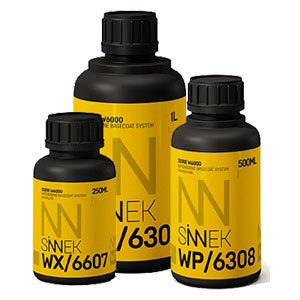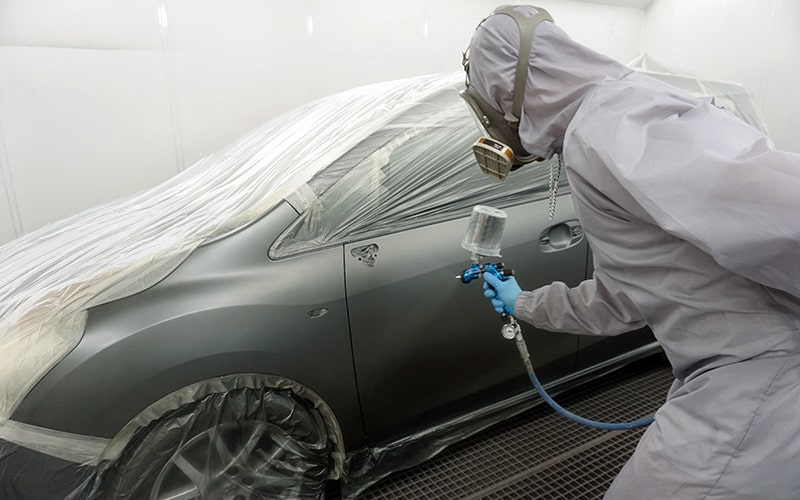
Nowadays, waterborne paint for cars is the most widespread type of painting system in certain markets, such as Europe, mainly due to current regulations on the limitation of VOC emissions.
Obviously, waterborne paint for bodywork has some differences compared with solvent-based paint systems. A thorough knowledge of its characteristics and advantages will allow you to make the most out of this type of paint, optimising its application and final profitability.
What is waterborne paint for bodywork?
Waterborne paint is a type of paint that must be thinned with treated water or an aqueous product to adjust its viscosity. It should be noted that the waterborne paint is only available for two-coat paint systems.
As mentioned above, the waterborne paint system began to be used on a massive scale in 2006, coinciding with the approval at European level of the new VOC emissions regulations. However, in other continents such as America or Asia, this type of paint can coexist with solvent-based paints.
Advantages of using waterborne paint for cars
Waterborne paint systems for bodywork have several advantages, among which we can highlight:
Increased hiding power
Undoubtedly, one of the greatest advantages of waterborne paints is the hiding power it provides to the repaired surface, which translates into lower product consumption and application time (fewer coats, shorter repair time), allowing the profitability of each job to be optimised.
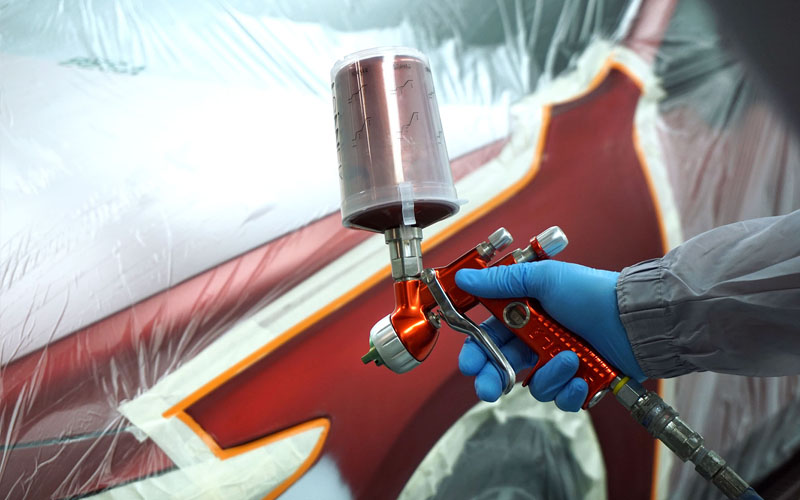
This is mainly because their mixture has higher viscosity, although this factor will depend on the pigment concentration and the paint formulation.
The colour obtained after drying waterborne paints will be different from the colour perceived when the paint is still wet
It should be considered that the colour obtained after drying waterborne paints will be different from the colour obtained when the paint is still wet, something that is not so noticeable in solvent-based paints, whose colour is more uniform during drying.
Environmentally friendlier and more sustainable paint
Waterborne paint is a more sustainable and environmentally friendly paint and better for the health of professionals.
This type of coating has a lower concentration of volatile organic compounds, which reduces the emission of gases and vapours into the environment. In addition, its manufacturing process limits waste generation and energy consumption.
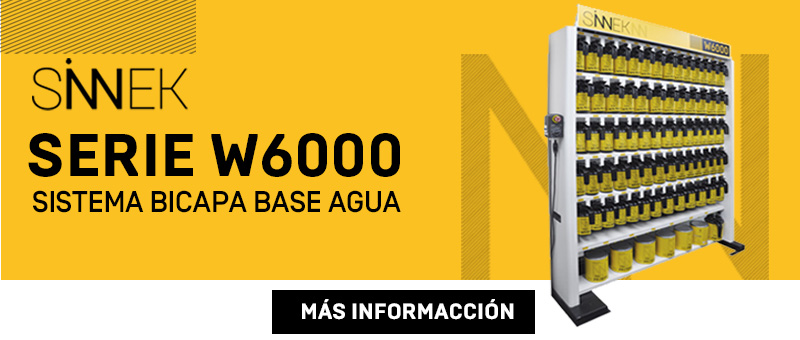
As we pointed out at the beginning of this article, the sustainability factor in relation to the use of waterborne paints in the bodywork sector is of particular relevance in Europe, due to the regulations approved in 2006 on the limitation of VOC emissions.
To get a clearer picture of the positive impact of this type of painting system, it is estimated that it can reduce the emission of volatile organic compounds into the environment by 90%, which has a direct impact on our health and our environment.
Wide range of colours
The colour formulation options in waterborne systems are greater compared to solvent-based systems.
The regulation and limitation of solvent-based paints in some markets has led many manufacturers and laboratories to attach great importance to the development of new waterborne colour formulations.
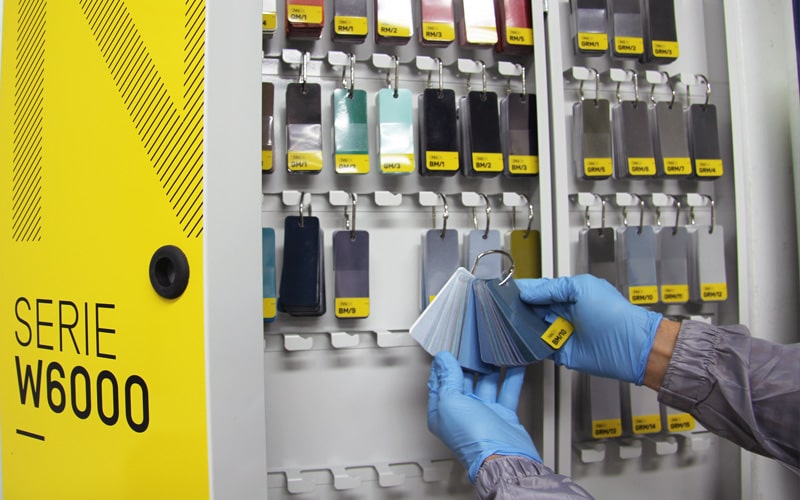
This gives rise to the possibility of having a wide colour catalogue for professionals in the sector, which aims to cover all the new colour options used by vehicle manufacturers.
Application control in blending and patches
In waterborne paint applications, the spray produced as a result of blending the paint is more controllable, mainly due to the fact that the water in the base itself acts as a heavy solvent, thus allowing greater control in the application.
In addition, it provides a small advantage when repairing patches, since the product reaches the part wetter, as there is not so much dilution in the mixture.
High final gloss
With this type of paint for bodywork, professionals will be able to obtain a high final gloss since, contrary to what happens with solvent-based paints, the base is not as porous on the surface, which helps the gloss to remain and not to disappear so much after applying the clearcoat.
Easier cleaning
No solvents or additives are required when cleaning tools such as guns, containers or spatulas, simply water.
All equipment and components in contact with water should be made of stainless steel or plastic to prevent rusting.
How to apply waterborne paint on bodywork
The process of preparing, mixing and applying waterborne paint is remarkably similar to that of solvent-based paint. However, there are small details and tips to keep in mind that can make all the difference in obtaining an excellent finish.
Application technique
First, we must apply a thin, wet layer. With metallic colours, this will help us to uniform the position of the metallic particles and prevent them from sticking out, reducing the possible flop effect in paint. With this first coat you should not necessarily achieve full coverage, but 80 – 85% of the surface.
In metallic colours, a third effect coat must be applied for the correct orientation of the metallic particles
Subsequently, we will apply a second full coat of paint on the part or parts to be repaired, covering the entire repair area.
It is important to apply the product parallel to the part, with the same distance, movement and speed. You must also ensure that the coats always overlap evenly.

Finally, especially in metallic shades, you must apply a third effect coat, which will help to correctly orient the metals. With this coat you will prevent shadows on the paint or other defects from appearing.
To get the basecoat to dry you can use a Venturi, placing it parallel to the part so that the air does not bounce back and thus achieve a more efficient drying.
Minimise spraying
On vertically oriented parts, the basecoat should be applied from the bottom up to reduce the dry spray mist on the parts being painted.
When several parts are painted, as is the case of the side of the vehicle, the overlapping areas of the first and second effect coat, which was applied afterwards, must be staggered. This also helps reduce spray mist and ensures a uniform appearance.
The overlapping areas between the first and second effect coat must be perfectly staggered
Preparation and cleaning of the substrate
The surfaces to be painted must be perfectly degreased and free of rust, dust or dirt. Poor cleaning causes poor wetting of the substrate.
On the other hand, if during the preparation and cleaning process of the part we have used a solvent-based degreaser, this must be completely dried before applying the waterborne paint, otherwise risk reactions with the paint.
Mixing and viscosity ratio
This type of paint has a higher viscosity in its formulation, so the amount of thinner to be used differs with respect to solvent-based paint. In addition, always controlling the ambient temperature during application will be essential for the correct performance and drying of the paint.
We must always follow the proportions and mixing ratios established in the technical data sheet of the paint system, based on the amount of paint, thinner or activator to be used.
Maintenance of equipment and tools
All tools and equipment used for paint mixing must be completely clean and free of debris or particles. Any type of particle foreign to the mixture can lead to different types of paint defects.
W6000 Series, the comprehensive painting system for bodyshops
The W6000 Series is SINNEK’s system that is specially designed to optimise the application and drying times of the different repair processes, allowing significant energy savings, and ensuring excellent gloss, appearance and durability of the finish.

All these features will allow the professional to:
- Reduce costs per repair.
- Improving bodyshop planning.
- Reducing delivery times.
- Increasing the flow of repairs.
- Improving customer satisfaction.
The W6000 Series system is an excellent choice for any bodyshop looking for a waterborne paint system that strikes the right balance between high profitability and quality finish.



